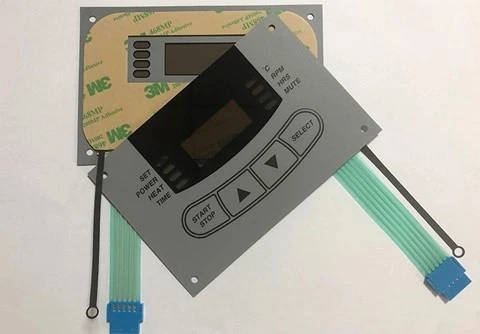
Touch control is a widely applied interactive technology between people, between humans and machines, and even between machines. It is one of the core technologies of the digital age. Currently, when smartphone users receive notifications, text messages, or tap the glass surface of their screens, they can feel a vibration. This is known as haptic feedback technology.
Haptic feedback is widely used in touch screens for smartphones, tablets, cameras, and many other devices. It is almost ubiquitous, woven into our daily lives. Today, almost all smartphones come equipped with some type of touch screen, and most tablet computers do as well. At airport check-in counters, in vehicle control panels, and even in the cameras we hold in our hands, physical buttons have been replaced by touch screens, providing us with a brand new user experience and enjoyment.
Haptic feedback technology combines physical sensation with electronic devices, giving users a "real" tactile experience during operation. Common forms of haptic feedback include electromagnetic, piezoelectric, pneumatic, and electrical stimulation, each with its unique advantages and disadvantages:
Electromagnetic Haptic Feedback: Typically requires complex mechanisms and heavier structures, has longer response times, and is limited in applicability.
Pneumatic Haptic Feedback: Requires a complex nozzle array and pneumatic components, making control difficult and the equipment bulky.
Electrical Stimulation Haptic Feedback: Mainly used to simulate pain sensations in games, with larger, more energy-consuming devices.

A membrane dome switch is an integrated system that combines key functionality, indicator elements, and panels. Traditionally, membrane dome switches use mechanical buttons to provide haptic feedback. However, as the size of electronic products continues to shrink, traditional mechanical buttons have brought about spatial constraints and design challenges. Therefore, piezoelectric haptic feedback technology has been introduced into membrane dome switches, offering an innovative solution.
Membrane switch panel manufacturers are now leveraging this technology to create more compact and efficient designs. By incorporating piezoelectric elements, manufacturers can provide enhanced tactile feedback while overcoming the limitations posed by mechanical components, thus meeting the evolving demands of modern electronic devices.
Space Saving: Compared to traditional mechanical buttons, the design of a piezoelectric haptic feedback membrane dome switch is more compact and simplified, eliminating the need for complex physical button mechanisms, thus saving space.
Precise Feedback: Piezoelectric components respond quickly and provide clear vibration feedback, allowing users to sense whether their touch operation was successful. This precise tactile feedback improves the user experience, making interactions more intuitive and smooth.
Durability and Stability: Piezoelectric haptic feedback elements have a long lifespan and can withstand frequent usage, operating stably in various environments. This makes membrane dome switches with piezoelectric technology particularly suitable for applications that require frequent use, such as medical equipment and industrial control systems.
Water and Dust Resistance: Membrane dome switches themselves have good sealing properties. With the integration of piezoelectric feedback technology, they effectively resist the intrusion of moisture, dust, and other contaminants, ensuring the stability and durability of the device in various environmental conditions.
Low Power Consumption and High Efficiency: Piezoelectric elements have low power consumption, making them ideal for use in mobile and portable devices that require extended operation times.

Medical Devices: In portable medical devices and diagnostic tools, flexible membrane dome switches with piezoelectric haptic feedback help doctors or medical staff receive precise tactile signals during operation, enhancing the efficiency and accuracy of medical work.
Industrial Control Systems: In industrial automation, membrane dome switches with piezoelectric haptic feedback are widely used in equipment control panels, especially in scenarios where precise operation and feedback are required, such as in petrochemical, metallurgy, and other high-demand industrial environments.
Smart Home and Automotive Electronics: Modern smart home devices and automotive control panels commonly use piezoelectric membrane dome switches. By integrating haptic feedback technology, users can operate touch screens and receive immediate feedback, thereby enhancing the overall user experience.
As electronic devices become more compact and the demand for more interactive, intuitive interfaces grows, piezoelectric haptic feedback in membrane dome switches offers significant advantages. It not only meets the space and durability requirements but also provides users with a richer and more responsive interaction experience. Whether in medical, industrial, or consumer electronics, the integration of haptic feedback technology in membrane dome switches continues to enhance product performance and user satisfaction. Membrane keypad manufacturers are at the forefront of this innovation, developing advanced solutions that incorporate piezoelectric haptic feedback to meet the evolving needs of various industries. By partnering with a manufacturer that specializes in this technology, companies can ensure their products deliver superior tactile feedback and overall user experience.